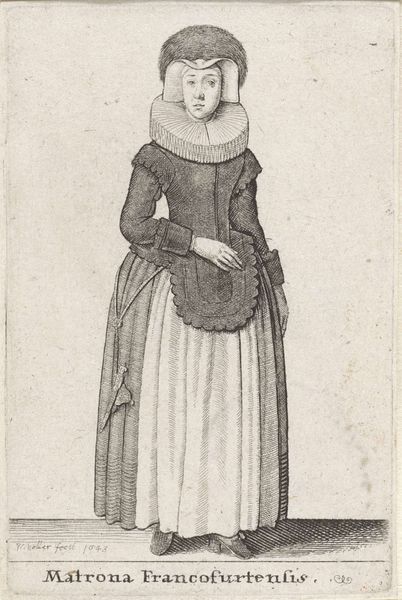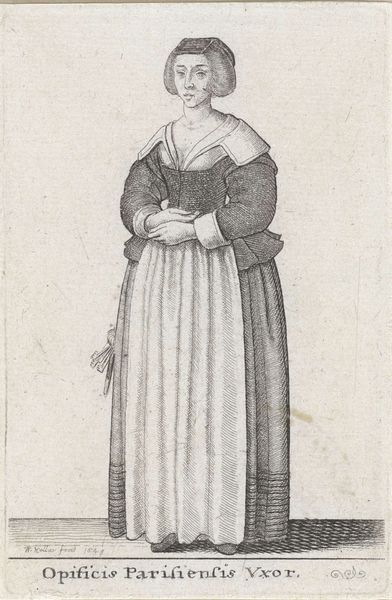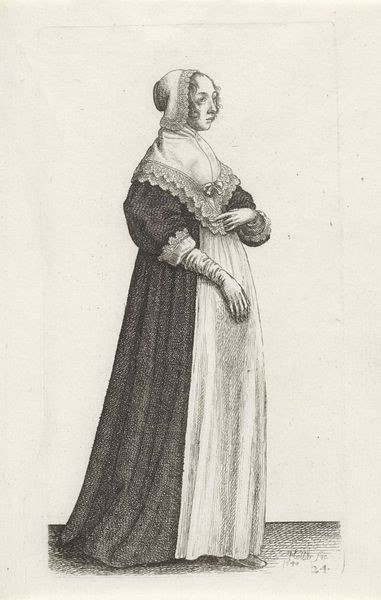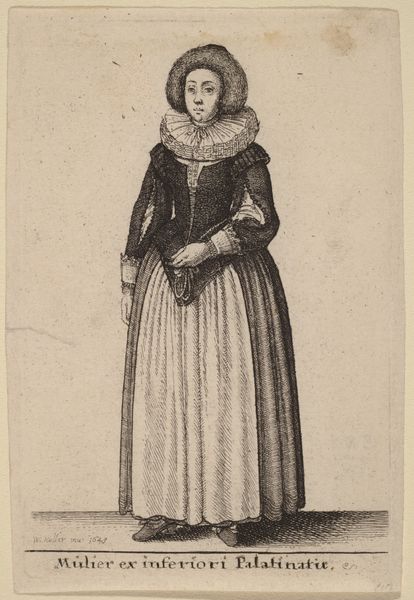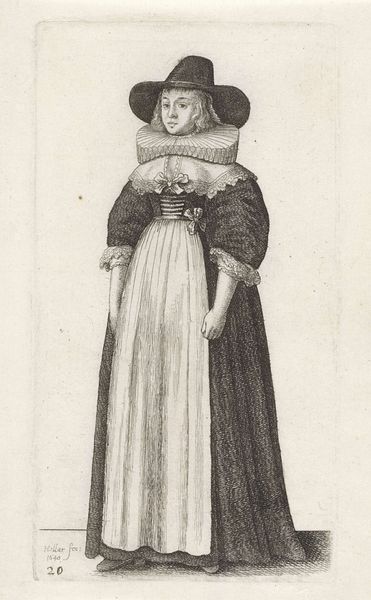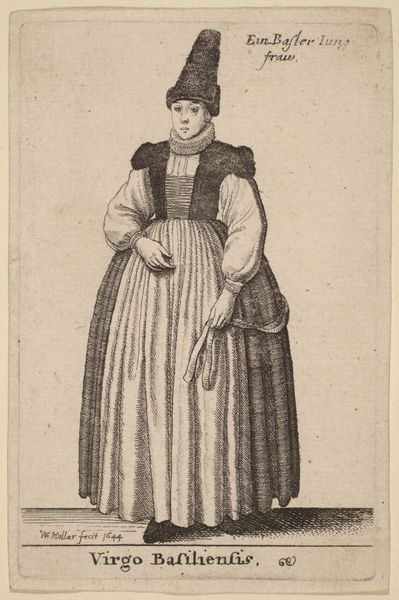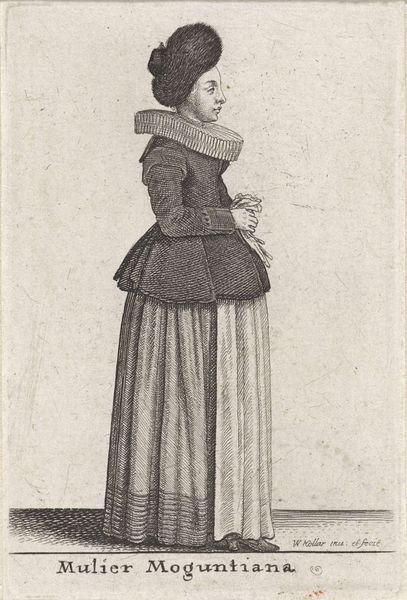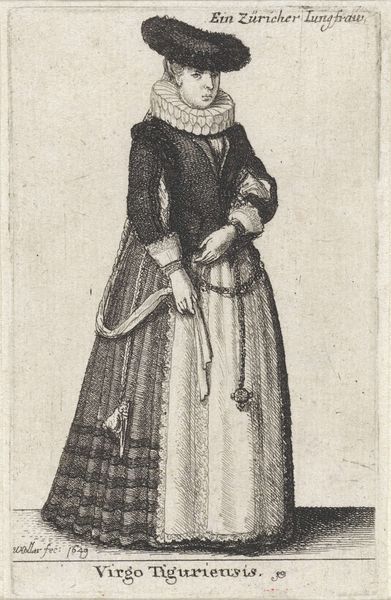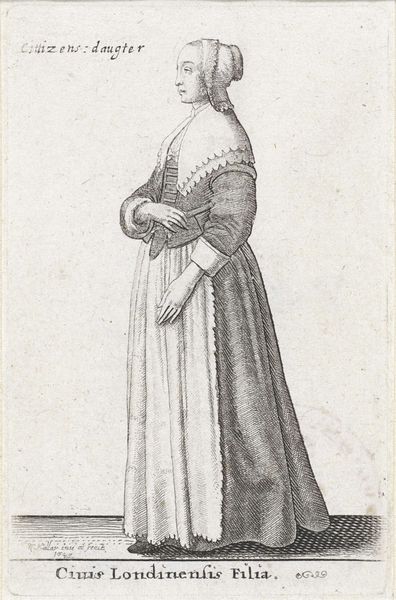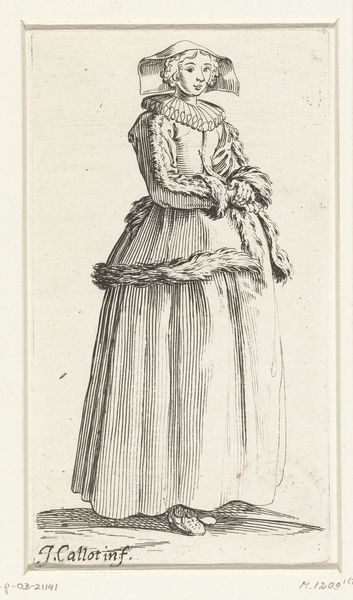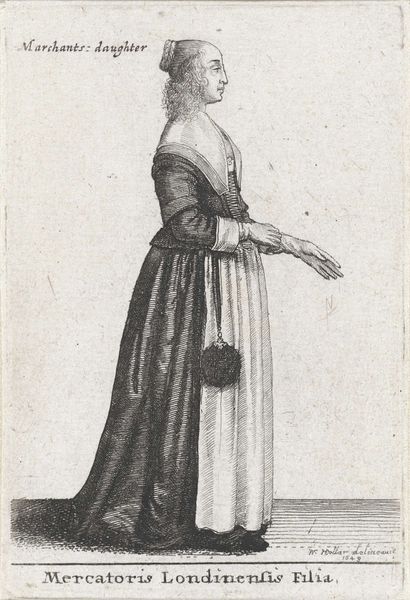
print, engraving
#
portrait
#
baroque
# print
#
old engraving style
#
figuration
#
old-timey
#
genre-painting
#
engraving
Dimensions: height 91 mm, width 60 mm
Copyright: Rijks Museum: Open Domain
Wenceslaus Hollar made this etching, "Mercatoris Hanaueinsis Vxor," which translates to "Wife of a Merchant from Hanau" at an unknown date. Here, Hollar captures the attire of a woman, likely from the German town of Hanau, offering a glimpse into the fashion and social status of the time. This print provides visual clues about the sitter’s position within 17th-century society. Her clothing, especially the elaborate ruff and gown, suggests affluence tied to her husband’s occupation as a merchant. The level of detail in the etching—the textures of the fabrics, the delicate lace—reveals Hollar’s skill and perhaps reflects the values of a society that prized detailed craftsmanship. To understand this work better, we might consult period fashion plates or merchant class inventories. These would provide insight into the social norms and economic realities that shaped the image. Art history enriches our understanding of cultural and institutional contexts, allowing us to interpret the image more comprehensively.
Comments
No comments
Be the first to comment and join the conversation on the ultimate creative platform.
